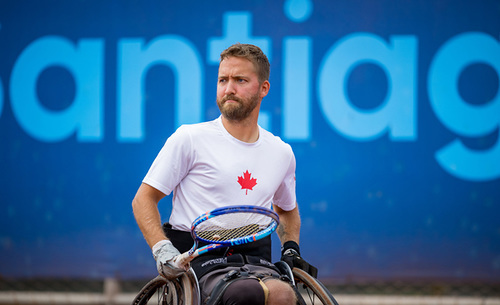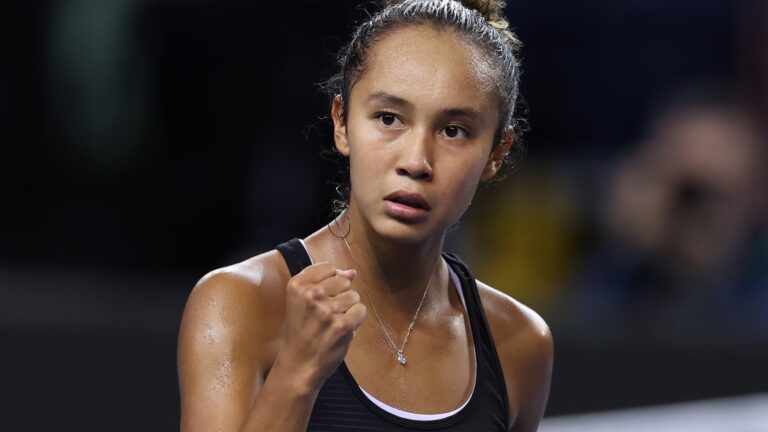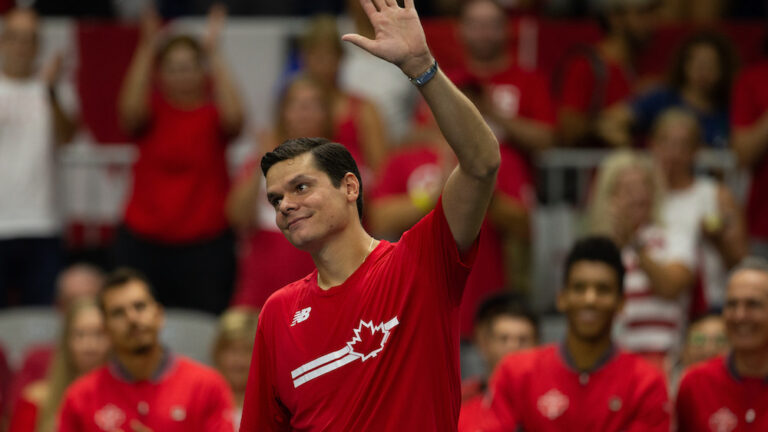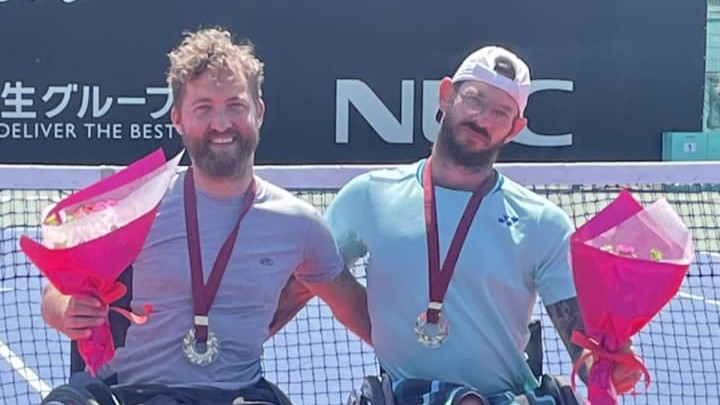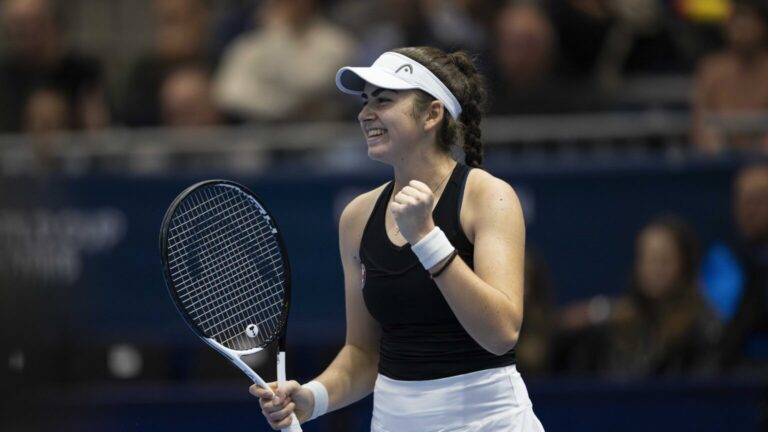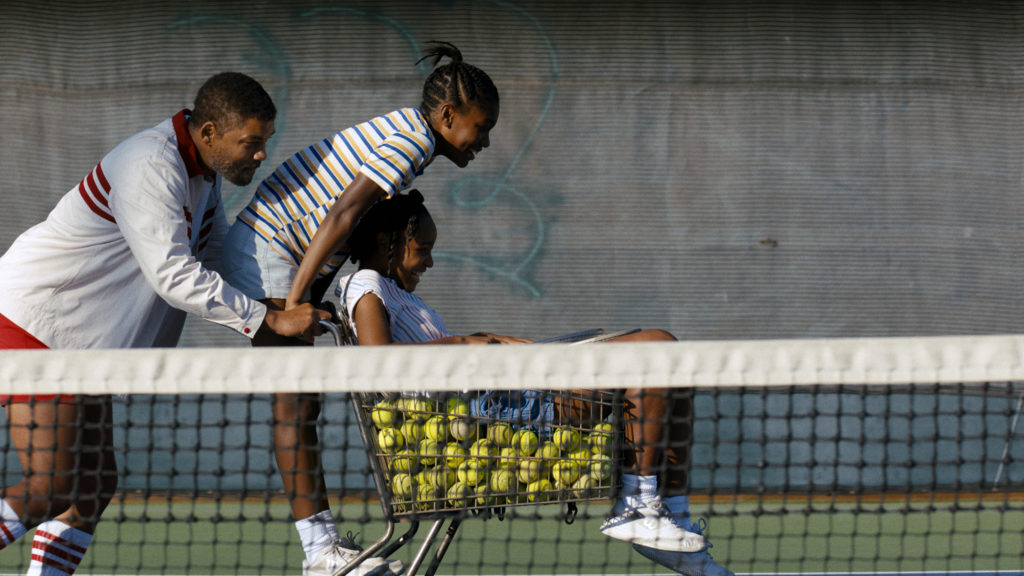
Photo : King Richard (Warner Bros.)
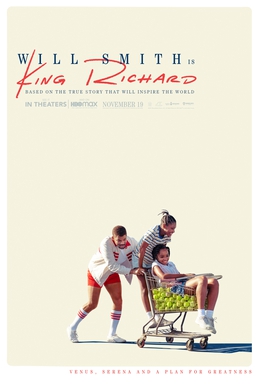
Is it possible to have followed Venus and Serena from the time rumours about their greatness began swirling in the early 1990s to their most recent matches this past season and still be surprised and charmed by King Richard?
Yes, since that’s exactly how I felt as I watched the two-hour (2:20) Hollywood production on growing up Williams.
I first wrote about the film on September 1 right here.
Of course, I had to find out for myself whether our expectations as fans, or not, were justified.
They most certainly are. King Richard is one of the best tennis films ever made.
Being captivated by a good movie is one thing (good job, Will Smith!), but fact checking is another.
And the movie passes that test, too.
Virtually all the scenes are based on fact, including a key moment in October 1994.
Seeing his younger daughter frustrated at all the attention and energy focused on 14-year-old Venus on the cusp of competing in her very first professional tournament, Richard Williams sits Serena down and famously tells her that Venus would be no.1 one day but she would be the greatest player of all all-time.
It’s also true that the intense and determined dad really did want two more kids to make them into tennis aces and that just about everything in the 78-page plan Richard Williams wrote up for them BEFORE they were even born came to be.
Astonishing, right? Even unbelievable?
Indeed.
But here we are.
Of course, the film isn’t perfect. Some of the coarser aspects of Richard’s life, including his repeated infidelities, were left out. But that’s not surprising considering Venus and Serena are the film’s executive producers, making it an admittedly authorized biopic.
Still, the sisters waited to see the film before adding their names to the credits—or at least that’s what Will Smith told Jimmy Fallon on the Tonight Show. The actor said he sat through two terrifying hours (the worst of his life!) at a screening waiting to see what Richard’s daughters had to say about the film. Smith revealed they cried from beginning to end.
The omissions are forgiven, and I was enthralled by the superstars’ early years, which most of us aren’t familiar with unless you read Richard Williams’ memoir Black and White: The Way I See It.
Will Smith has played sports personalities before, including Muhammad Ali in Ali and Bennet Omalu in Concussion. As an actor and director, he delivers an excellent Richard Williams, loving father and controversial and salesy figure who was obsessed with a tennis project that was absolutely utopian. Smith even gained weight to take a more Williamsian posture.
As for the young stars who share the screen with him—Saniyya Sidney as Venus and Demi Singleton as Serena—they didn’t play tennis before getting the roles. Judging from the on-court scenes, they made some pretty phenomenal progress, especially left-handed Saniyya Sidney who took on the extra challenge of learning to hit with her right hand.
Of the two actresses, Demi Singleton as young Serena has the strongest Williams family resemblance. In some scenes, the likeness is astonishing, and that certainly adds to the film’s believability.

There were also countless extras chosen among some 4,000 actors who auditioned.
The producers get high marks because, unlike a lot of sports films, the on-screen tennis is some of the most realistic I’ve ever watched (and as a lifelong player and commentator, I can be pretty picky). As for the tennis stars, the actors aren’t look-alikes but still make short and believable appearances as John McEnroe, Pete Sampras, Jennifer Capriati and Arantxa Sanchez-Vicario, who gets dragged in the film for her infamously lengthy bathroom break in her match against 14-year-old Venus.
If you haven’t seen Richard Williams in a while, that’s because he’s stayed out of the spotlight of late due to health problems.
Still, on November 9, he made a quick appearance on Serena’s Instagram page. In the video, he tells Serena’s daughter Olympia “You are the best!” as she pedals by on her training wheels.
Melbourne, a few stars short
Add Serena Williams to the list of players who’ll be skipping the first Slam of 2022.
Tournament organizers confirmed the news on Twitter on December 8.
“Following the advice of my medical team, I have decided to withdraw from this year’s Australian Open”, said Williams in a press release. “While this is never an easy decision to make, I am not where I need to be physically to compete.”
Serena hasn’t played in a tournament since her first-round loss on June 29 to then No.100 Aliaksandra Sasnovich of Belarus due to a hamstring strain. Williams was No.8 at the time and now sits at No.41.
Her decision further postpones her attempt to equal Margaret Court’s record of 24 Grand Slam titles, especially considering how few matches she’s played in the past three years. Since she fell to Naomi Osaka in September 2018, she’s competed in only 20 events.
Two days earlier, Canadian Bianca Andreescu also announced she would not be travelling to Melbourne.
On the men’s side, Roger Federer confirmed his absence on November 17 and likely won’t be back in action before mid-season.
Novak Djokovic is slated to play but has yet to confirm his vaccination status.
Another first for the great Amélie Mauresmo
On December 9, Amélie Mauresmo was appointed tournament director of Roland-Garros. She takes the reins from Guy Forget and is the first woman to hold the position.
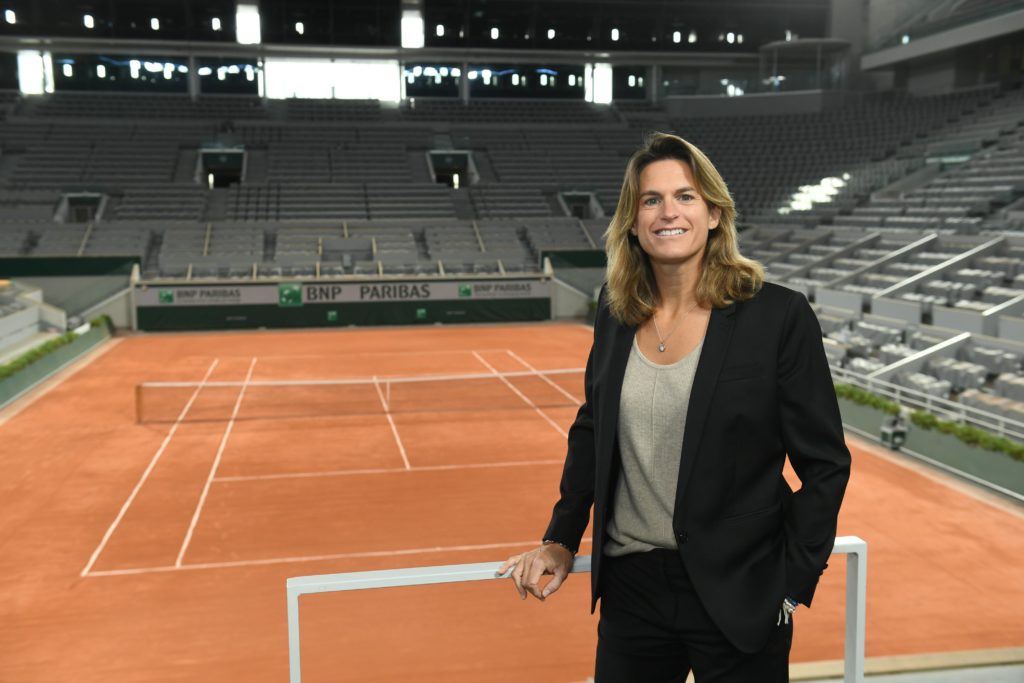
In 2006, she won two majors and spent a total of 39 weeks (in 2004 and 2006) as World No.1.
As a retiree, she advised several players, including Marion Bartoli on her way to the Wimbledon crown.
Amélie was the first woman to coach an elite player on the men’s circuit when she joined Andy Murray’s team in 2014 and again in 2016. She is also the first woman to captain a Davis Cup team and steered the French squad at Billie Jean King Cup.
Today, she is the first woman to lead her home country’s Slam—perhaps the only honour that was missing from her impressive track record. She is only the second woman to run a Grand Slam after Canada’s own Stacey Allaster at the 2020 US Open.
Ace the holidays
Here we are in tennis’ in-between, a few weeks in which you’ll (hopefully) have some time to relax and unwind.
For fans looking for off-court entertainment, I’ve compiled a few suggestions for the perfect tennis gift for an exchange or yourself, whether you want to take a few hours with a great documentary or a little longer with a great book.
Citizen Ashe
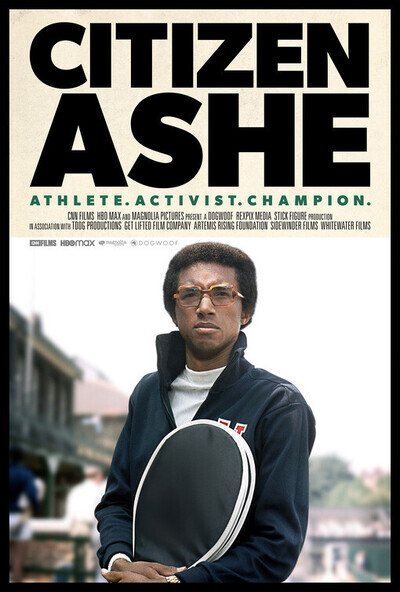
While Richard Williams has, in his own words, “had a war against the white race”, Citizen Ashe touches upon another type of activism a few decades before the Williams stormed the country club.
In the late 60s and 70s, American professional tennis player Arthur Ashe rose high in the rankings and secured not one but three Grand Slam titles: the US Open (1968), the Australian Open (1970) and Wimbledon (1975). The main stadium at the USTA National Training Center, which just happens to be the world’s largest tennis venue with a capacity of 23,771 spectators, is named in his honour.
When the documentary’s co-director Rex Miller began preparing for the documentary five years ago, he had no idea how timely and relevant it would be in 2021. With Sam Pollard, he viewed dozens of archival film reels owned by TIME.
The film premiered at the Telluride Film Festival in September with limited screenings in New York City since December 3 and is already getting plenty of Oscar buzz.
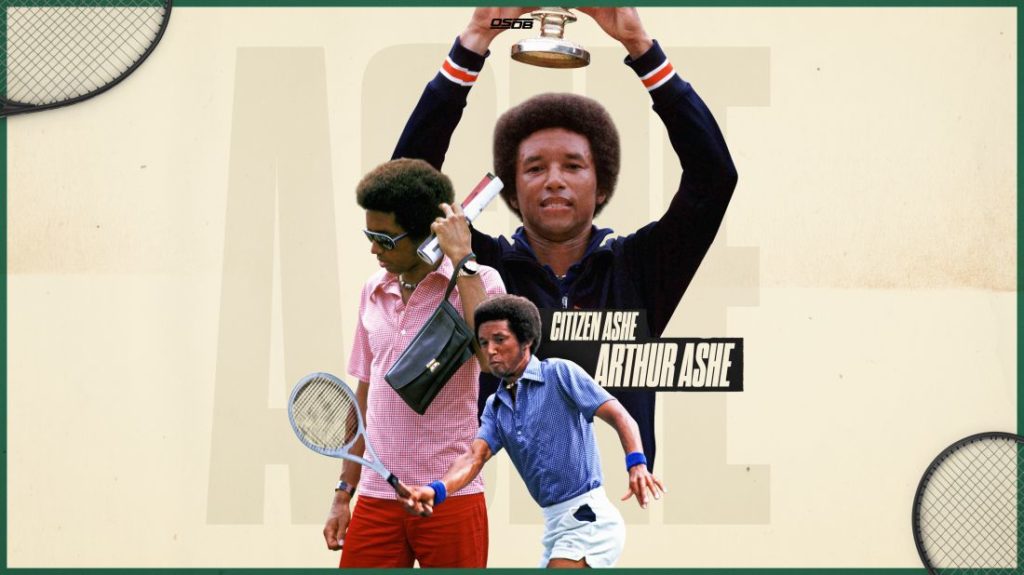
Watch the trailer here:
The Master
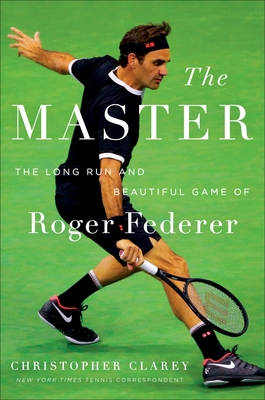
Yes, another book about the Maestro. This time, by acclaimed New York Times journalist Christopher Clarey.
The title is self-explanatory. I don’t have anything to add, except for the fact that I’m still waiting for my copy to be shipped to my local bookseller. If it gets here in time for the holidays, I’ll definitely be spending some quiet hours by the fire with this NYT bestseller.
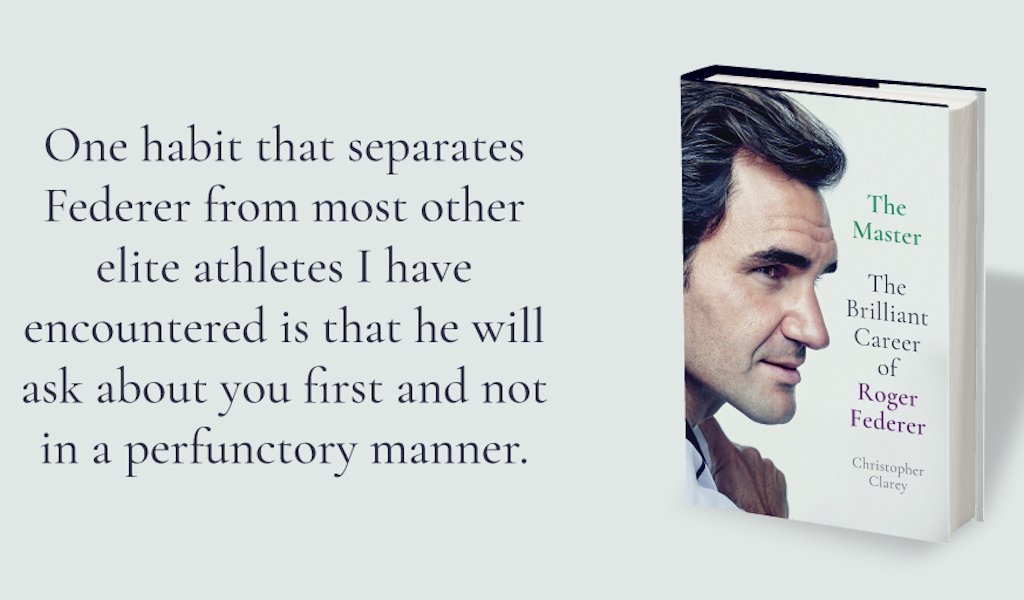
Kevin Palmer of Tennis365 sat down with Christopher Clarey this summer. Listen to the interview here.
Facing Bjorn Borg
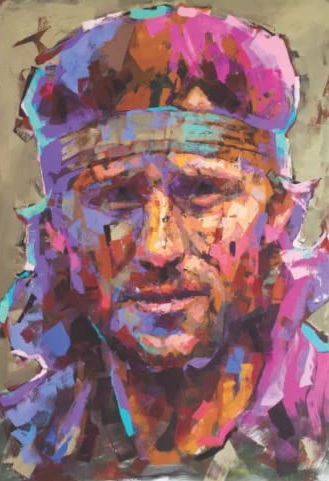
Tennisnow.com published a few excerpts from Facing Bjorn Borg by Scoop Malinowski, including glimpses into what Andre Agassi and Ivan Lendl had to say about the Ice Man (aka the Angelic Assassin).
While his tennis career was shorter than most since he retired at only 26, Borg still won 11 majors with a virtually unheard-of winning percentage of 89.8% at the Slams. He secured three of those 11 crowns without dropping a single set.
While you’re at it, what could be better than doubling down with Bjorn Borg’s eternal rival, the slightly less introverted John McEnroe?
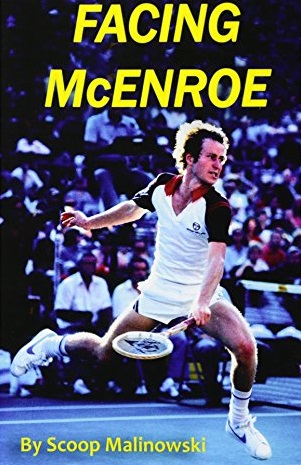
Get in touch with me!
Email: privard@tenniscanada.com
Twitter: @paul6rivard
Follow all our Canadians in action here.
